Let’s kick off your journey into creating budget-friendly DIY terrariums with everyday items. You can transform simple objects into mini ecosystems; think mason jars, old bottles, or thrifted vases. Start with a basic setup using pebbles for drainage—about 1-2 inches deep—then layer activated charcoal to prevent mold. Curious how a $1 plastic cup can become a lush micro-world? Stick around to explore these 10 practical ideas.

Contents
Mason Jar Mini Garden
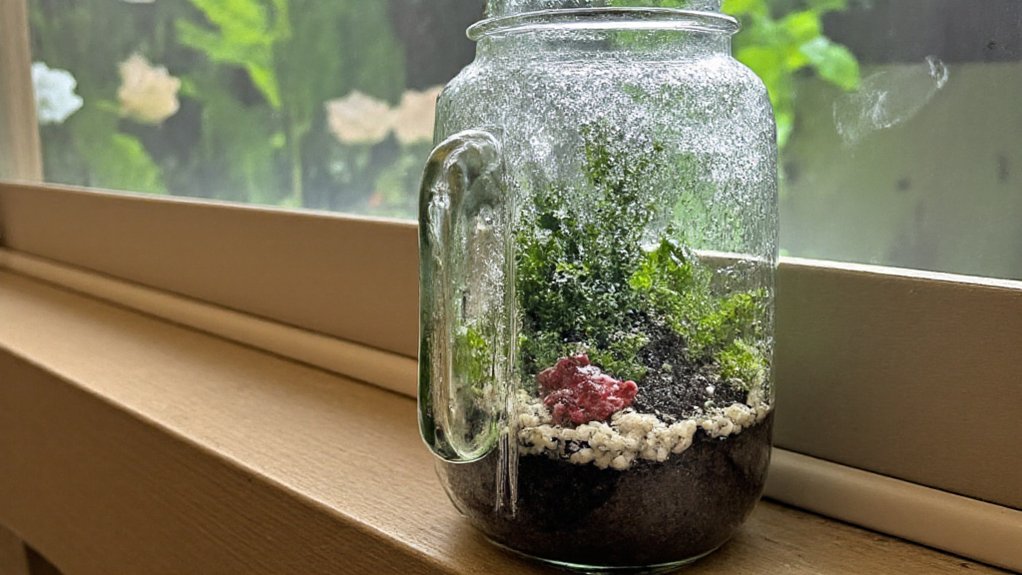
Creating a Mason Jar Mini Garden is a simple and charming way to bring a touch of nature indoors. All you need is a clean mason jar, some small pebbles or gravel for drainage, activated charcoal to keep the environment fresh, potting soil, and small plants like succulents, moss, or air plants. Start by layering the bottom of the jar with pebbles, followed by a thin layer of charcoal, and then add a layer of soil before planting your chosen greenery. This setup not only looks adorable on a windowsill or desk but also requires minimal maintenance, making it perfect for beginners.
To personalize your mini garden, consider adding tiny figurines, decorative stones, or even a small piece of driftwood for a whimsical touch. Since mason jars are transparent, they beautifully showcase the layers and textures of your terrarium. Just make sure the jar gets indirect sunlight and avoid overwatering to prevent mold growth. This DIY project is an affordable and creative way to craft a little green oasis in any space.
Recycled Glass Bottle Terrarium
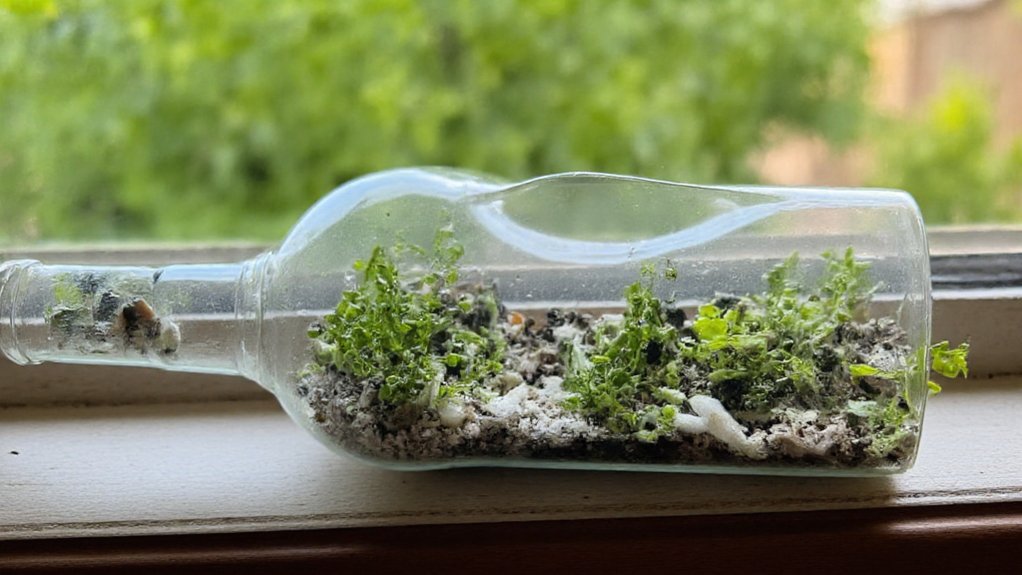
A recycled glass bottle terrarium is a creative and eco-friendly way to bring a miniature garden into your home using items you might already have. Start with a clean, empty glass bottle—such as a wine or soda bottle—with a wide enough opening to fit small plants and materials. Layer the bottom with small pebbles or gravel for drainage, followed by a thin layer of activated charcoal to keep the environment fresh, and then add a layer of potting soil. Choose small, low-maintenance plants like moss, air plants, or tiny ferns that thrive in humid conditions, and carefully place them inside using a spoon or small tool.
To enhance the aesthetic, you can add decorative elements like small figurines, rocks, or driftwood, creating a whimsical tiny world within the bottle. Since glass bottles often have narrow necks, they naturally retain moisture, making them ideal for tropical plants that enjoy a humid environment. Place your terrarium in indirect sunlight, and water sparingly—only when the soil appears dry—using a dropper or small syringe to avoid overwatering. This DIY project not only recycles materials but also adds a unique, green touch to your space.
Thrifted Container Green Space
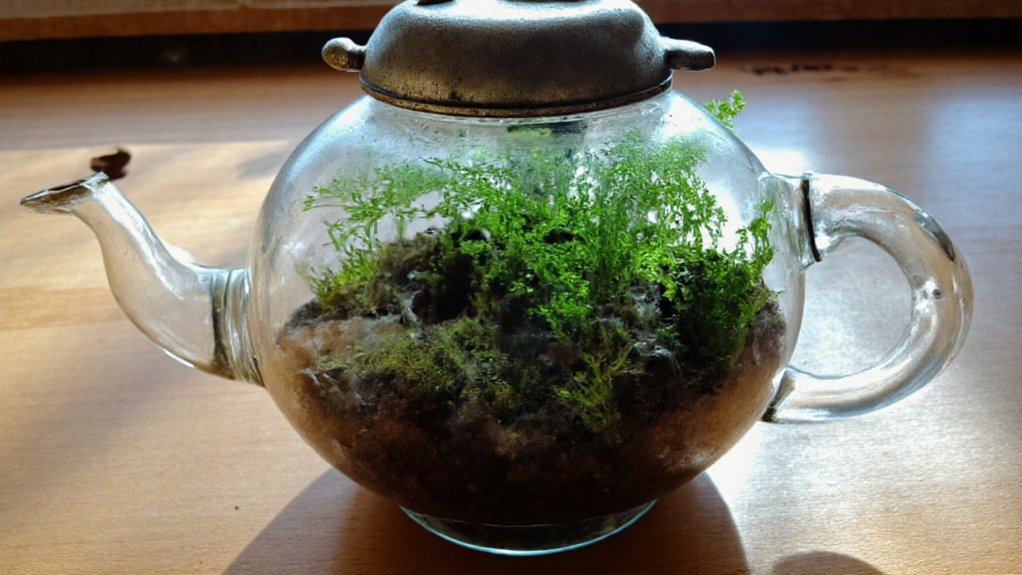
Creating a thrifted container green space is a budget-friendly and creative way to build a terrarium using unique, second-hand containers. Scour thrift stores, garage sales, or even your own home for glassware like old jars, vases, or even quirky items like teapots and fishbowls that can be repurposed into a mini ecosystem. These containers often have character and charm that add a personal touch to your terrarium, making each one a one-of-a-kind piece.
To start, make sure the container is clean and has a lid or can be covered to maintain humidity for tropical plants, or leave it open for succulents and cacti that prefer drier conditions. Layer the bottom with pebbles for drainage, add a barrier like moss or mesh to prevent soil from mixing, and then add potting mix suitable for your chosen plants. This thrifted approach not only saves money but also promotes sustainability by reusing items that might otherwise be discarded.
Plastic Cup Micro Ecosystem
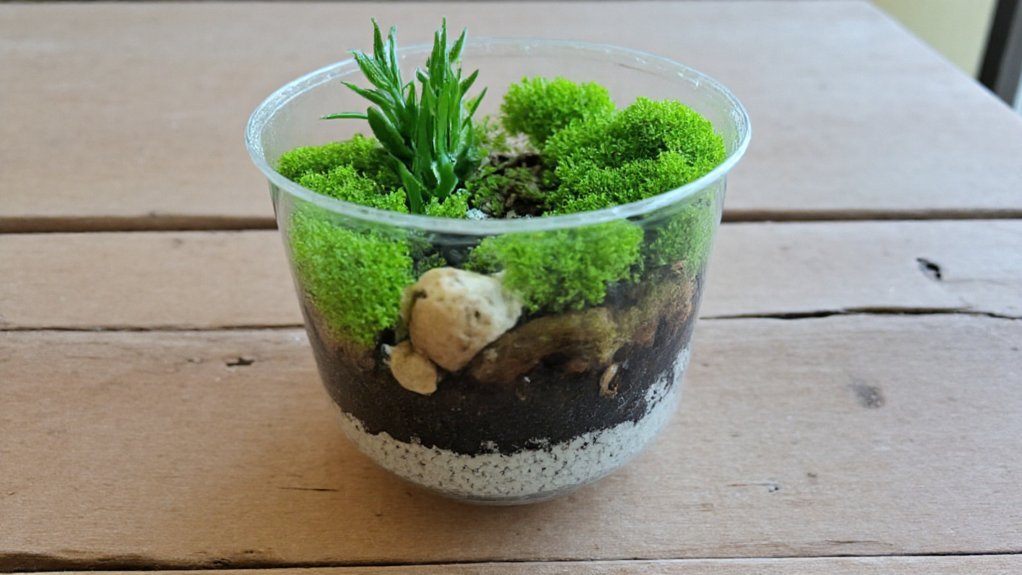
Creating a micro ecosystem in a plastic cup is an easy and affordable way to build a tiny terrarium. Start with a clear plastic cup to allow light to penetrate and provide visibility of the miniature world inside. Layer the bottom with small pebbles or gravel for drainage, followed by a thin layer of activated charcoal to keep the environment fresh. Add a layer of potting soil, then plant small, low-maintenance plants like moss, air plants, or small ferns that thrive in humid conditions.
To complete the ecosystem, add tiny decorative elements like figurines, rocks, or twigs for a whimsical touch. Mist the plants lightly with water, then cover the cup with a lid or plastic wrap to retain moisture, creating a self-sustaining environment. Place the cup in indirect sunlight and monitor it occasionally to make sure the plants remain healthy, making this a perfect project for beginners or small spaces.
Old Fish Bowl Plant Haven
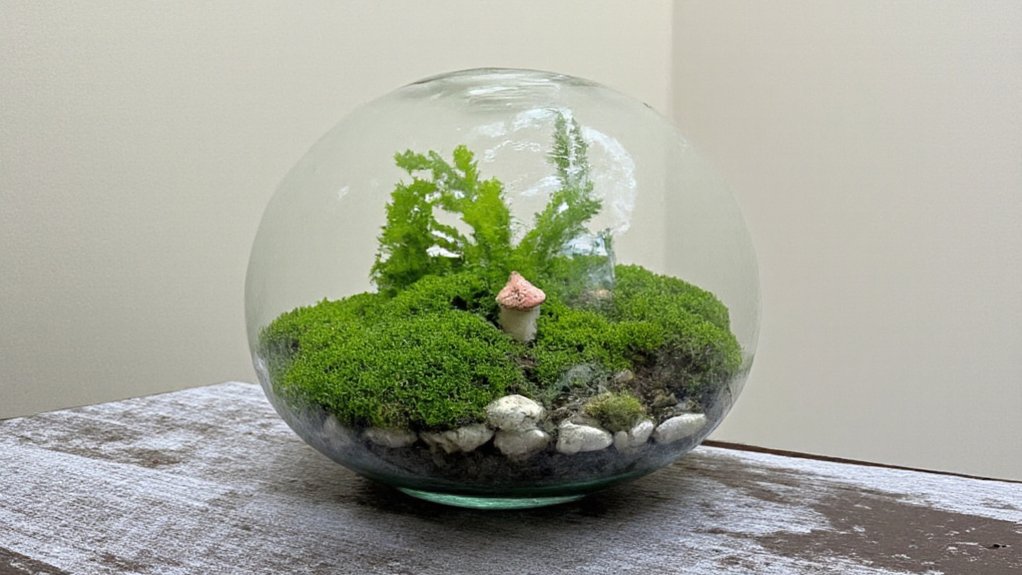
Transforming an old fish bowl into a plant haven is a creative and simple way to craft a DIY terrarium. Start by cleaning the bowl thoroughly to remove any residue, then add a layer of small pebbles or gravel at the bottom for drainage. Next, place a thin layer of activated charcoal to keep the environment fresh, followed by a layer of potting soil suitable for the plants you’ve chosen, such as small ferns, moss, or air plants.
Select plants that thrive in a humid, enclosed environment and arrange them artistically within the bowl, leaving space for growth. Add decorative elements like tiny figurines, rocks, or driftwood to enhance the aesthetic appeal. Place the fish bowl terrarium in indirect sunlight and mist the plants occasionally to maintain moisture, creating a miniature ecosystem that brings a touch of nature indoors.
Repurposed Candle Holder Oasis
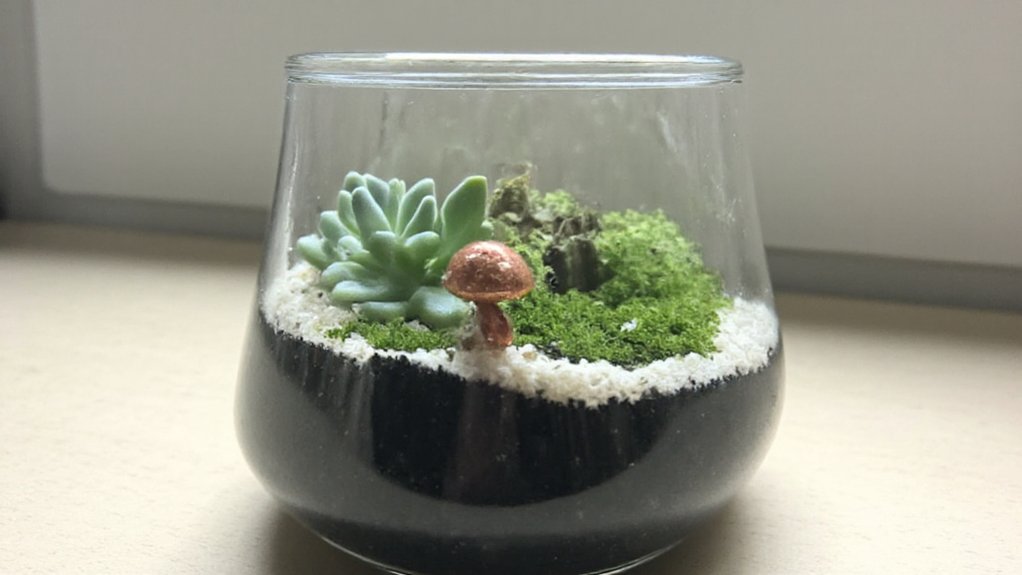
Transform an old candle holder into a charming mini terrarium with the Repurposed Candle Holder Oasis idea. If you have a glass candle holder that’s no longer in use, clean it thoroughly to remove any wax residue and turn it into a tiny green haven. Its transparent structure is perfect for showcasing small plants like succulents, air plants, or moss, creating a beautiful display for your home.
To create this oasis, start by adding a layer of pebbles or small rocks at the bottom for drainage, followed by a thin layer of activated charcoal to keep the environment fresh. Then, add a layer of potting soil suitable for your chosen plants, and carefully place them inside. Finish with decorative elements like tiny figurines or colored stones to personalize your terrarium. This repurposed piece not only adds a touch of nature to your space but also serves as a creative way to upcycle items you already own.
Budget-Friendly Hanging Orb
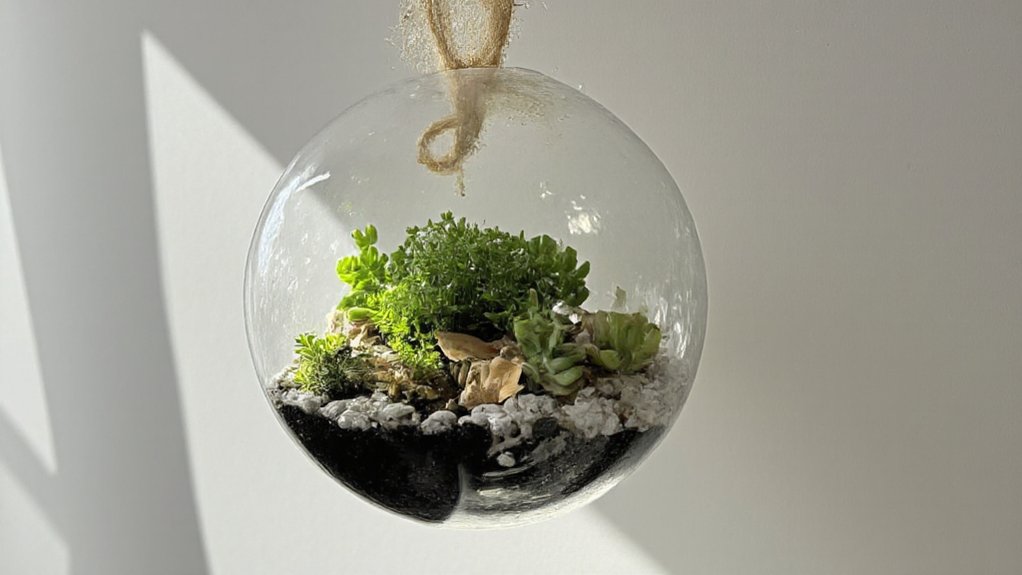
Creating a budget-friendly hanging orb terrarium is a simple and stylish way to bring greenery into your space without breaking the bank. Start with a clear glass orb, often available at dollar stores or thrift shops for just a few dollars. These orbs typically come with a small opening, perfect for crafting a miniature ecosystem, and a loop or hook for easy hanging.
To assemble, gather inexpensive materials like small pebbles or gravel for drainage, a bit of activated charcoal to keep the environment fresh, and affordable potting soil. Add low-cost, low-maintenance plants like air plants, small succulents, or moss, which can often be found at local nurseries or even propagated from cuttings. Hang the orb in a spot with indirect sunlight using twine or a cheap chain, and you’ve got a charming, budget-friendly decor piece that adds life to any room.
DIY Tin Can Jungle
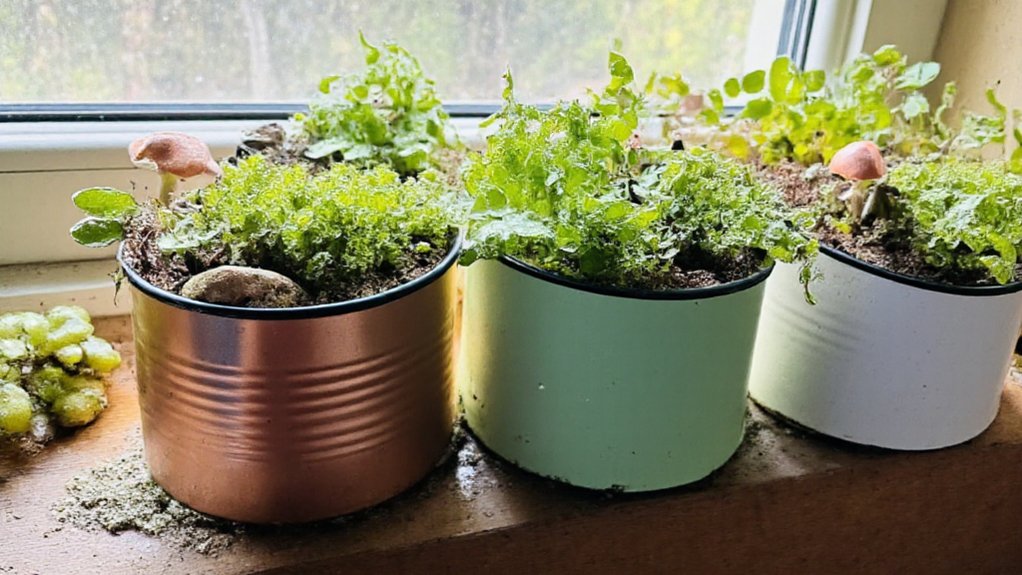
Creating a DIY Tin Can Jungle is a fun and eco-friendly way to repurpose old tin cans into a lush, miniature garden. Start by collecting empty tin cans, ensuring they are thoroughly cleaned and any sharp edges are smoothed out for safety. Paint or decorate the outside of the cans to add a personal touch, then fill them with small pebbles or gravel at the bottom for drainage, followed by a layer of potting soil.
Choose small plants or succulents that thrive in confined spaces, such as moss, air plants, or mini ferns, to create a jungle-like vibe. Arrange the plants inside the cans, adding tiny figurines or rocks for a whimsical effect. Place your tin can jungle on a windowsill or shelf where it can get adequate light, and water sparingly to maintain the mini ecosystem. This project is perfect for adding a touch of greenery to small spaces or as a creative gift idea.
Upcycled Light Bulb Planter
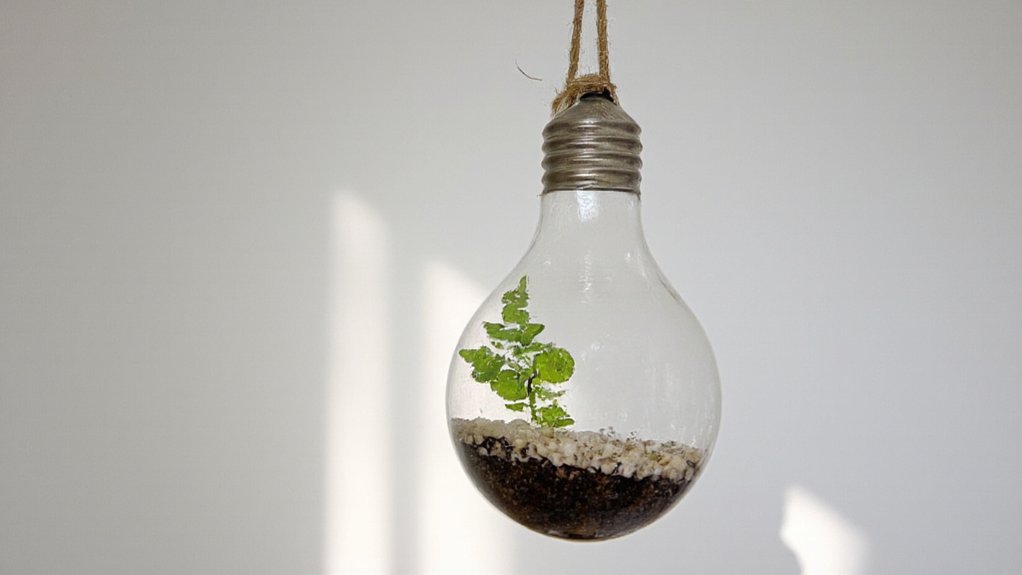
The Upcycled Light Bulb Planter is a creative and eco-friendly way to craft a mini terrarium using old, burnt-out light bulbs. Start by carefully hollowing out an incandescent bulb, removing the inner filaments and metal base with pliers (ensure safety by wearing gloves and goggles). Once the bulb is empty and cleaned, it becomes a unique glass container perfect for a tiny ecosystem.
Fill the bulb with small pebbles for drainage, a layer of activated charcoal to keep it fresh, and a bit of sphagnum moss or potting soil. Add a small plant like a miniature fern or air plant, and seal the opening with a cork or leave it open for easy maintenance. Hang the bulb with twine or place it on a small stand to display your whimsical, upcycled terrarium.
Simple Teacup Nature Nook
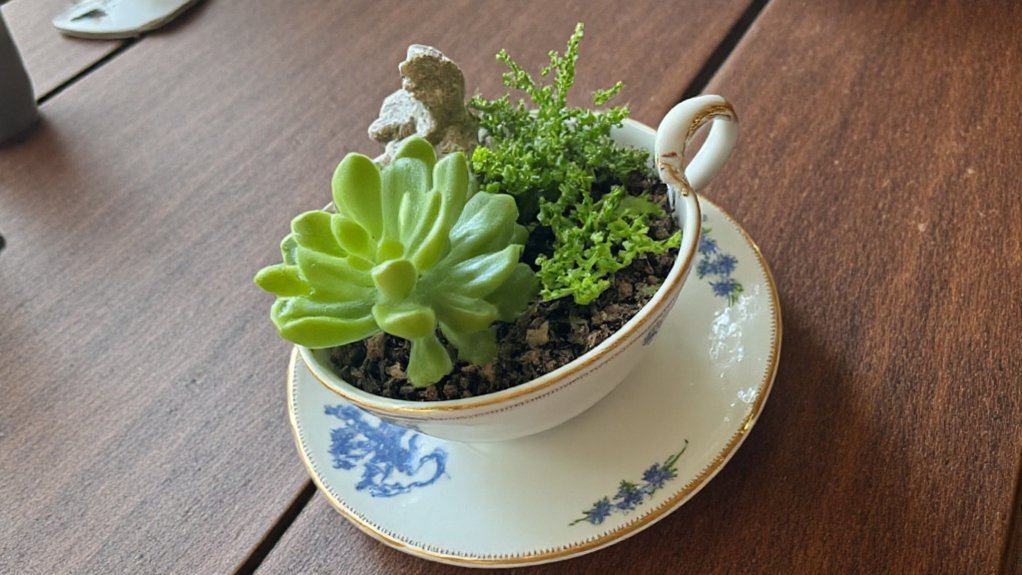
Creating a Simple Teacup Nature Nook is an easy and charming way to bring a miniature garden into your home using everyday items. Start with an old or unused teacup and saucer, which serve as the perfect petite container for this DIY terrarium. Fill the bottom of the teacup with small pebbles or gravel for drainage, then add a layer of potting soil. Choose tiny plants like moss, air plants, or small succulents that thrive in confined spaces and require minimal care.
To personalize your nature nook, add decorative elements such as miniature figurines, tiny rocks, or bits of driftwood to create a whimsical scene. Place your teacup terrarium in a spot with indirect sunlight, and water sparingly to avoid over-saturation. This tiny green oasis not only adds a touch of nature to your space but also serves as a delightful conversation starter.
